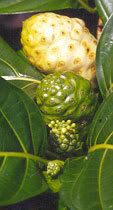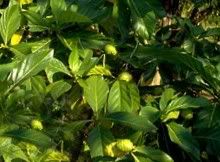Cold weather tips to avoid damage in your garden
Cold weather and particularly frost, causes the water in plant cells to freeze, damaging the cell wall. Frost-damaged plants are easy to spot, their growth becomes limp, blackened and distorted. Evergreen plants often turn brown and the leaves of tender plants take on a translucent appearance. Frost problems are often made worse where plants face the morning sun, as this causes them to defrost quickly, rupturing their cell walls.
Hardy plants and tough evergreens can also be damaged by prolonged spells of severe cold when soil becomes frozen. Roots are unable to take up water and plants die from lack of moisture. Periods of cold, frosty weather during April and May can also kill blossom and damage fruit.
Minimising damage
Prevention is far better than cure, so try to minimise the damaging effects of cold on your plants:
* Avoid golden or variegated plant varieties that are often more tender.
* Choose plants that are reliably hardy in the area where you live.
* Avoid high-nitrogen fertilisers as they encourage plants to make lots of sappy leafy growth that is particularly susceptible to damage, especially early and late in the year.
* Make sure tender specimens are planted in a sheltered spot, under large trees and shrubs or against walls, give them some heat and protection during the winter.
* Ensure that plants with tender flower buds or shoots are not planted in east-facing sites.
* Leave the old growth of tender plants unpruned over the winter months. This will help to protect the central crown of the plant and take the brunt of any frost damage. If plants are cut back hard in autumn new growth could be damaged by frost.
* Cold air and frost always descend to the lowest point in a garden so avoid planting tender plants in obvious frost pockets.
Protecting plants
The ever-increasing number of tender plants on offer may not withstand sustained cold without some form of protection. How you protect your plants from the effects of cold depends on the type of plants and the situation they are growing in.
* Protecting plants with strawPlants that are trained against walls or tender plants growing in the open ground can be protected with simple, fleece-covered frames. Alternatively, sandwich a layer of bracken leaves or straw between two large sections of chicken wire and use this to cover plants during frosty evenings. Tender bulbs, corms and tender, herbaceous plants (that die back) should be covered with a thick mulch of manure, straw or old leaves to prevent the soil from freezing. In the spring, new shoots can be protected with a loose layer of straw or a bell-cloche.
* Evergreen plants will benefit from a thick layer of mulch around their bases to keep the soil frost-free. This will allow them to take up moisture during periods of cold weather and stop them from becoming dehydrated.
* Tender plants should be grown in pots so that they can be moved inside during bad weather. Take cuttings of those that cannot be grown in pots and overwinter these in a warm greenhouse, ready for planting in spring.
* Protect the crowns of tree ferns and insulate their trunks by wrapping them in layers of fleece or hessian stuffed with straw. Cordylines and palms should be treated similarly, by tying their leaves into bunches, to protect their crowns.
* Protect low-growing plants from wet weather by covering them with a sheet of glass or a cloche and surrounding them with a layer of gravel or grit, to ensure swift drainage.
* Pots in the greenhouseChoose outdoor outdoor containers that are frost-proof to prevent them cracking. Lift pots and containers into a shed or greenhouse for protection. Those that can't be moved should be placed on 'pot feet' to prevent waterlogging. Using a light, free-draining compost with added perlite will also help with this. Insulate them with a layer of bubble wrap or hessian to prevent them freezing and cracking and ensure plant rootballs stay healthy.
Damaged plants
If your plants do get frosted this doesn't necessarily mean the end for them, many plants will recover given time. However there are ways of minimising the damage:
* Protect them from the morning sun, which can damage growth if the plant defrosts too quickly. If you can't move the plants, try covering them with a layer of black plastic to block out the sun.
* Cut back frosted growth in spring to a healthy, new bud, to prevent further die back and encourage plants to produce fresh, new shoots.
* Feed damaged plants with a balanced fertiliser (one with equal amounts of Nitrogen, Phosphorus and Potassium) to encourage strong, healthy growth.
* Dig up small, tender plants and take them into the greenhouse. Many will quickly produce new growth and recover, provided they are not subjected to prolonged periods of heavy frost, wet or cold.
* Newly-planted specimens will often lift themselves proud of the soil surface if there is a hard frost straight after planting. Check them regularly and re-firm the ground around them to ensure their roots are always in contact with the soil.
The benefit of snow is that it acts as an insulator, protecting plants from the cold and frost, however, a heavy layer of snow can also cause leaves and branches to break, so it's important to know how to deal with it when it arrives:
* Shake excess snow from the branches of large trees, shrubs and hedges, to prevent them from becoming disfigured by the weight.
* Remove heavy deposits of snow from the roofs of greenhouses or cold frames to let in the light and prevent the structures from bending under the weight.
* Use lengths of string to support the branches of conifers and stop them being pulled out of shape. Branches that move away from the main plant won't spring back into place when the snow melts.
* Avoid walking on snow-covered grass as it will damage the turf beneath and leave unsightly marks on the lawn. It can also encourage the growth of fungal diseases which thrive in the cool damp conditions.









